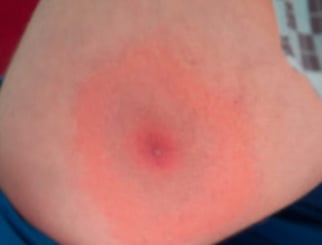PROVIDENCE, R.I. (WPRI) ─ A new vaccine trial is underway at The Miriam Hospital, but this time it’s not for COVID-19.
The new vaccine targets Lyme Disease, and Dr. Timothy Flanigan hopes that dozens of Rhode Islanders will take part in the trial.
“The burden of Lyme and other tick-borne diseases is very substantial, and our patients suffer very considerably, not only with acute illness but also with the long-term [after effects],” Flanigan said.
Flanigan is the co-director of the Lyme Disease Center at The Miriam. He said the hospital is now conducting a Phase 2 clinical trial of the vaccine and is requesting teenagers take part.
“They’ve already enrolled the adults and [the results] show that it’s well tolerated,” Flanigan said. “Now they’re enrolling teenagers and kids over the age of five. That’s, I think, very exciting because Lyme really affects kids but also often the research in children is left far behind.”
Flanigan said during the trial, two-thirds of the participants will receive the vaccine while the others will receive a placebo … Click here to read more.




